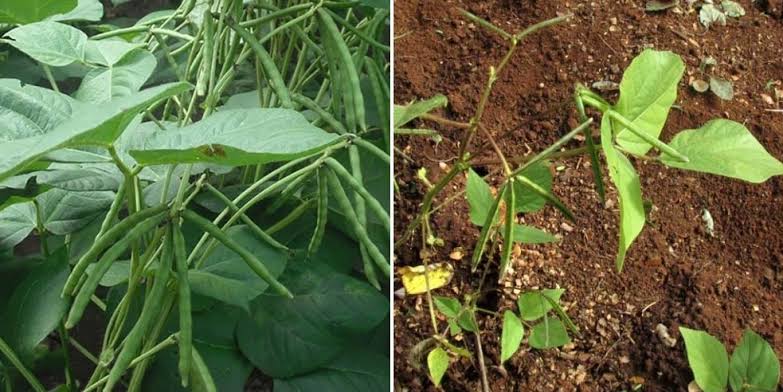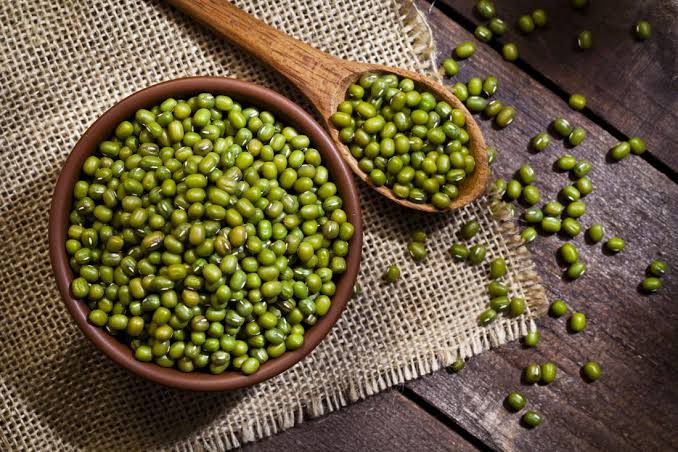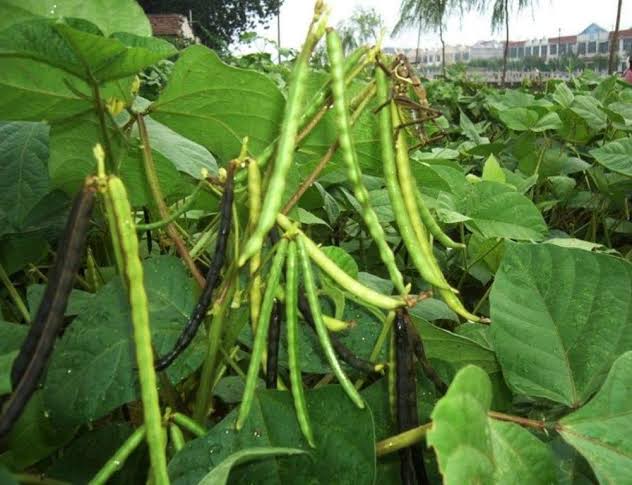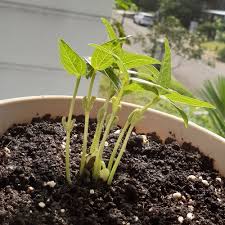Mungbean is a small, green legume that has been cultivated for centuries, contributing significantly to the global diet. This tiny bean, scientifically known as Vigna radiata, holds immense nutritional value and has become a staple in various cuisines around the world.
Originating from the Indian subcontinent, Mungbean has spread its roots to different corners of the globe. Farmers appreciate its versatility and ability to thrive in diverse climates, making it a reliable crop for many regions. The plant itself is unassuming, with delicate green leaves and clusters of small, oval-shaped pods containing the precious beans.
In terms of nutrition, Mungbean packs a powerful punch. These beans are an excellent source of plant-based protein, making them a crucial component for vegetarians and vegans. Additionally, they are rich in essential nutrients such as iron, potassium, and fiber, promoting overall health and well-being.
Culinary enthusiasts adore Mungbean for its adaptability in the kitchen. From hearty soups to flavorful curries, these beans lend themselves to a myriad of dishes. Moreover, Mungbean sprouts, obtained by germinating the beans, add a delightful crunch to salads and sandwiches, boosting both taste and nutritional content.
On the agricultural front, Mungbean plays a pivotal role in sustainable farming practices. As a legume, it has the unique ability to fix nitrogen in the soil, enhancing fertility and reducing the need for synthetic fertilizers. This not only benefits the crop itself but also contributes to the overall health of the farming ecosystem.
Beyond its nutritional and agricultural significance, Mungbean holds cultural importance in various societies. In Asian cuisines, it is a symbol of good luck and prosperity, often included in festive dishes during special occasions. The cultural connection to Mungbean goes beyond its taste, resonating with traditions and rituals passed down through generations.
In addition, Mungbean is more than just a humble legume; it is a nutritional powerhouse, a versatile culinary ingredient, and a key player in sustainable agriculture. Its journey from the Indian subcontinent to global kitchens showcases its adaptability and the universal appreciation for its benefits.
In recent years, the popularity of Mungbean has soared as people increasingly recognize the health benefits associated with incorporating this legume into their diets. Researchers and nutritionists have delved into the nutritional profile of Mungbean, discovering its potential to support heart health, aid digestion, and contribute to weight management.
One of the standout features of Mungbean is its high fiber content. Fiber is essential for a healthy digestive system, promoting regular bowel movements and preventing constipation. Moreover, the soluble fiber in Mungbean has been linked to lower cholesterol levels, reducing the risk of heart-related issues. This simple legume thus emerges as a heart-friendly addition to your plate.
Beyond its fiber content, Mungbean boasts a remarkable combination of vitamins and minerals. Its iron content is noteworthy, making it a valuable component for individuals at risk of iron deficiency or anemia. Additionally, the potassium in Mungbean supports proper muscle and nerve function, contributing to overall bodily well-being.
Weight management enthusiasts also appreciate Mungbean for its protein-rich nature. Protein is essential for muscle repair, growth, and maintenance, making Mungbean an attractive option for those looking to enhance their protein intake, especially in plant-based diets.
The versatility of Mungbean extends to its culinary applications, with innovative recipes continually emerging. From Mungbean-based desserts to creative uses in baked goods, chefs and home cooks alike are exploring new ways to incorporate this nutrient-dense legume into a variety of dishes.
On the agricultural front, Mungbean’s role in crop rotation cannot be overstated. Its ability to fix nitrogen in the soil is not only environmentally friendly but also economically beneficial for farmers. This practice not only enhances soil fertility but also reduces the need for costly synthetic fertilizers, contributing to sustainable and eco-friendly farming practices.
However, the story of Mungbean is a tale of nutritional richness, culinary adaptability, and environmental sustainability. As we continue to uncover the many facets of this unassuming legume, its importance in promoting health, supporting agriculture, and connecting cultures becomes increasingly apparent. So, whether you enjoy Mungbean in a traditional dish or experiment with new recipes, you’re not just savoring a meal – you’re embracing a history and a future intertwined with the many benefits of this remarkable legume.
Read Also: Rabbit Reproductive System (Male and Female)
How to Grow and Care for Mungbean

Growing and caring for Mungbeans can be a rewarding experience, whether you’re a seasoned gardener or a novice. Here’s a simple guide to help you cultivate and nurture these versatile legumes:
1. Soil Preparation: Mungbeans thrive in well-draining soil with a slightly acidic to neutral pH (around 6.2-7.2). Ensure good aeration and water retention in the soil.
2. Planting:
Timing: Plant Mungbeans after the last frost when the soil has warmed up. They prefer warm temperatures for germination and growth.
Depth: Plant seeds about 1 to 1.5 inches deep, spaced at least 4 to 6 inches apart. Rows should be around 18 inches apart.
Sunlight: Mungbeans love sunlight. Ensure they receive at least 6-8 hours of direct sunlight daily for optimal growth.
3. Watering:
Consistency: Keep the soil consistently moist, especially during flowering and pod formation.
Avoid Waterlogging: Ensure good drainage to prevent waterlogging, as Mungbeans are susceptible to root rot.
4. Fertilization: Mungbeans generally do well in nutrient-rich soil, but you can incorporate organic matter like compost before planting. Avoid excessive nitrogen, as it can lead to more foliage and fewer beans.
5. Support: While Mungbeans are not usually tall, providing a simple support system like stakes can help keep the plants upright and facilitate harvesting.
6. Weeding: Regularly remove weeds around the Mungbean plants to reduce competition for nutrients and ensure optimal growth.
7. Pest Control: Keep an eye out for pests such as aphids or leafhoppers. Insecticidal soap or neem oil can be used for natural pest control.
8. Harvesting:
Timing: Harvest Mungbeans when the pods are mature but still green, usually around 60-70 days after planting.
Method: You can either pluck the pods by hand or cut the entire plant at ground level.
9. Drying and Storage: After harvesting, allow the Mungbeans to dry completely. Once dry, remove the beans from the pods and store them in a cool, dry place.
10. Crop Rotation: To prevent diseases and improve soil fertility, consider rotating Mungbeans with other crops each season.
11. Successive Planting: For a continuous harvest, consider planting Mungbeans in successive batches, staggering the planting times by a few weeks.
By following these simple guidelines, you can enjoy a bountiful harvest of Mungbeans in your home garden. Remember to tailor these instructions to your specific climate and growing conditions for the best results. Happy gardening!
Uses of Mungbean

Mungbeans, with their versatility, find applications in various culinary, nutritional, and agricultural aspects. Here are some of the key uses of Mungbeans:
1. Culinary Delights:
Soups and Stews: Mungbeans are a popular ingredient in soups and stews, adding a hearty and nutritious element to the dish.
Curries: They are commonly used in Asian cuisines to prepare flavorful curries, often combined with spices and vegetables.
Sprouts: Mungbean sprouts are a nutritious addition to salads, sandwiches, and stir-fries, providing a crunchy texture and fresh taste.
Desserts: In some cultures, Mungbeans are used to make sweet treats like pastes, puddings, and traditional desserts.
2. Nutritional Powerhouse:
Protein Source: Mungbeans are an excellent source of plant-based protein, making them a valuable addition to vegetarian and vegan diets.
Rich in Nutrients: They contain essential nutrients such as iron, potassium, fiber, and various vitamins, contributing to overall health and well-being.
3. Agricultural Benefits:
Crop Rotation: Mungbeans are often used in crop rotation to enhance soil fertility by fixing nitrogen, reducing the need for synthetic fertilizers.
Sustainable Farming: Their ability to thrive in diverse climates and contribute to sustainable farming practices makes them a valuable crop for agricultural systems.
4. Health and Wellness:
Digestive Health: Mungbeans, rich in dietary fiber, promote healthy digestion and may help prevent constipation.
Heart Health: The soluble fiber in Mungbeans is associated with lowering cholesterol levels, supporting cardiovascular health.
5. Traditional and Cultural Significance:
Symbol of Prosperity: In some Asian cultures, Mungbeans are considered a symbol of good luck and prosperity, often incorporated into festive dishes.
6. Environmental Impact:
Nitrogen Fixation: Mungbeans contribute to nitrogen fixation in the soil, improving soil fertility and reducing the environmental impact of synthetic fertilizers.
7. Food Industry:
Processed Foods: Mungbeans are sometimes processed into products like flour or starch, used in the food industry for various applications.
8. Livestock Feed:
Animal Nutrition: Mungbean plants, including leaves and pods, can be used as nutritious fodder for livestock, providing a sustainable feed source.
In addition, Mungbeans have a wide range of uses, spanning culinary delights, nutritional benefits, agricultural practices, and even cultural symbolism. Their adaptability and nutritional profile make them a valuable ingredient in various aspects of human life and agriculture.
Read Also: Rabbit Feeds and Feeding Systems
Economic Benefits of Mungbean

The cultivation and utilization of Mungbeans bring about several economic benefits, contributing to both local and global economies. Here are some of the key economic advantages associated with Mungbeans:
1. Agricultural Income:
Farmers’ Revenue: Mungbeans serve as a valuable cash crop for farmers, providing them with a source of income through the sale of harvested beans.
2. Export Opportunities:
International Trade: Mungbeans are often exported to various countries, contributing to international trade and generating foreign exchange earnings for producing nations.
3. Crop Rotation and Soil Health:
Reduced Input Costs: The ability of Mungbeans to fix nitrogen in the soil reduces the need for synthetic fertilizers, leading to cost savings for farmers.
Improved Yields: Crop rotation with Mungbeans can enhance soil fertility, subsequently increasing yields of other crops in the rotation.
4. Food Industry and Processing:
Food Processing Sector: Mungbeans are processed into various products such as flour or starch, creating opportunities for the food processing industry and generating employment.
5. Livestock Feed:
Livestock Industry: Mungbean plants, when used as fodder, contribute to the livestock industry, supporting animal nutrition and potentially reducing feed costs.
6. Employment Opportunities:
Rural Employment: The cultivation and processing of Mungbeans can create jobs in rural areas, providing employment opportunities and contributing to economic development.
7. Sustainable Agriculture Practices:
Environmental Benefits: The incorporation of Mungbeans in crop rotation contributes to sustainable agricultural practices, potentially attracting environmentally conscious consumers and investors.
8. Diversification of Agriculture:
Diversified Income: For farmers engaged in multiple crops, Mungbeans add to the diversification of agricultural activities, reducing dependency on a single crop and minimizing financial risks.
9. Health and Wellness Industry:
Growing Demand: As Mungbeans gain popularity for their nutritional benefits, there may be an increasing demand for Mungbean-based products in the health and wellness industry, creating economic opportunities.
10. Research and Innovation:
Investment in Research: Continued research on Mungbeans for improved varieties, pest resistance, and sustainable farming practices can attract investments, fostering innovation in agriculture.
In conclusion, Mungbeans contribute significantly to the economic landscape by providing income to farmers, supporting international trade, creating employment opportunities, and promoting sustainable agricultural practices. The economic benefits extend beyond the farm to encompass various sectors, making Mungbeans a valuable and versatile component of the global economy.
Read Also: Estimating Waste-water Flow Rates from Water Supply Data

